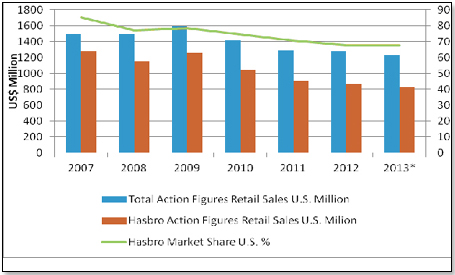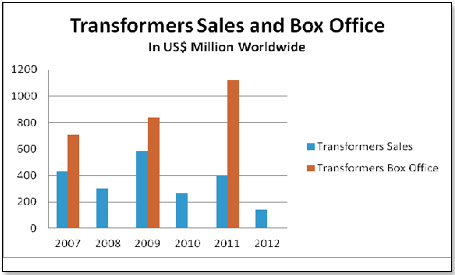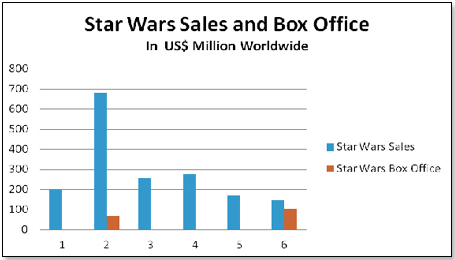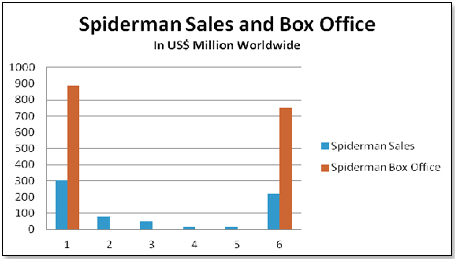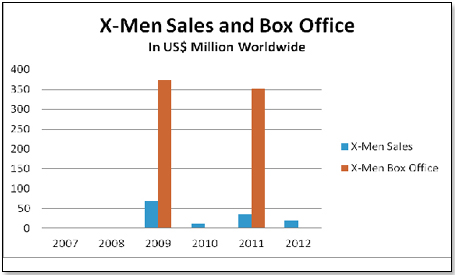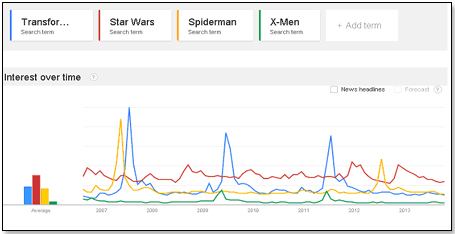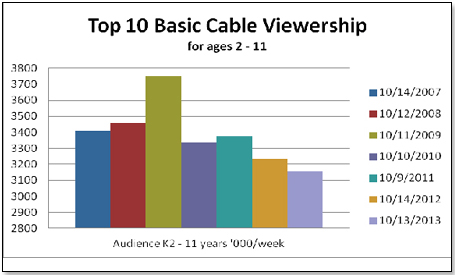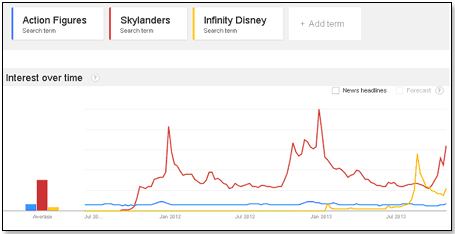
April 19, 2024

November 2013 | Vol. XII - No. 11
Action Figures in the Doldrums
Is Skylanders the savior - or destroyer - of the Action Figure category?
Action Figures represent about 6% of the U.S. toy market and are completely dominated by Hasbro. This is how the picture has developed since 2007:
Hasbro’s action figure program is totally driven by blockbuster movies. This began in 1997 when the company obtained the Star Wars license from Lucas and used the three movies between 1997 and 2005 to establish their preeminent position in the field. This was further cemented when Hasbro and Marvel signed an agreement whereby Hasbro could piggyback on all the Marvel movies from that point onwards. This arrangement was continued in 2009 when Disney bought Marvel and again in 2012 when Disney bought Lucas.
However, something seems amiss in this strategy. Even though Hasbro has had the action figure rights for the top movies in the field, they have lost market share in the U.S. market consistently since making the deal with Marvel. This is clearly not because of execution – nobody beats Hasbro when it comes to bringing an action figure to the market. So the reason must lie somewhere else.
I asked national Buyers at the major retailers both here and in Europe what they thought could be the reason. They came up with several.
1. One reason may lie in the fact that movies do not seem to be able to generate sales the way they used to do. I looked at the retail sales and the box office results of four products with two or more movies between 2007 and 2012 and this is the picture that emerges.
First, the Transformers:
Source: Box Office Mojo and Klosters Retailer Panel
Secondly, Star Wars:
Thirdly, Spiderman:
And lastly, X-Men:
What this suggests is that whilst box office results are either holding up or are in fact increasing, the opposite holds true for their attending toy sales. This is best shown by web traffic patterns, which show consumer interest in these properties.
Source Google Trends
The peaks reflect interest triggered by the movies but the overall trend is clearly negative. I think that whilst consumers still like the movies, they have grown a little tired of seeing variations of the same toy themes year after year.
2. Some national Buyers believe that the increase in blockbuster movies in fact degrades their impact on toy sales, and they may have a point. There were four action figure movies in 2007, five in 2008, six in 2009, six in 2010, eight in 2011, five in 2012 and eight in 2013. For 2014, there are now ten on the launching pad.
Another factor is the bunching of these movies into the prime-viewing months. The graph below demonstrates this phenomenon:
In other words, the Buyers believe that the action figure movies increasingly cannibalize each other.
3. Another negative factor is the declining interest in the media that are the main drivers for Action Figures, either the movies themselves or the advertising accompanying them. There is clear evidence that movie as well as TV attendance by the prime target group is declining
Firstly, movies:
Source The-Numbers.com
There are non-published studies carried out by a major Hollywood studio which suggest that the drop in the below 10 years age group has been particularly pronounced since 2010. Co-incidentally, this is also the year in which Netflix’ movie streaming really got traction.
Secondly, TV:
Source: Cynopsis.com
Children are watching less TV and their attendance has been declining since 2009.
4. A technological change introduced early last year promises to affect the way kids use toys – the Skylanders and now also Infinity. Both marry physical toys to a video game console and allow a completely new way of playing. In the opinion of the Buyers at the large retailers, the Skylanders clearly encroach upon the Action Figure space whereas Infinity affects both Action Figures and Preschool. Whilst NPD classifies the Skylanders as well as Infinity as video games rather than toys, the Buyers disagree and they demonstrate this by putting the two ranges both into their video game space as well as their toy aisles. In fact, if the Skylanders had been included in NPD’s Toy Category, they would have given a major bump to the Action Figure retail sales performance for 2012 and would also have reversed the continuous decline of the overall NPD Toy Market estimates over the past ten years.
The graph below demonstrates the interest level generated with consumers:
According to NPD, retail sales of the Skylanders in the U.S. amounted to U.S.$500 million last year. If they had been included in toys rather than video games, they would have dwarfed every single one of Hasbro’s top selling Action Figures.
What is also interesting in this context is that Disney decided to paddle their Infinity boat by themselves rather than going their accustomed route of licensing the thing to Hasbro or Mattel. This did indeed raise a few eyebrows amongst the national Buyers at the major retailers who wonder whether this presages a change in the relationship between Disney and the leading toy companies.
In summary, the buyers believe that the Action Figure category – buffeted by technological change, degradation of supporting media and eroding consumer interest – is not going to go back to the good old days. Yes, they think that movie-supported action figures will still sell but that the Skylanders and the Inifinitys of this world will be the decisive future drivers.
Copyright © 2024 TDmonthly®, a division of TOYDIRECTORY.com®,
Inc.



